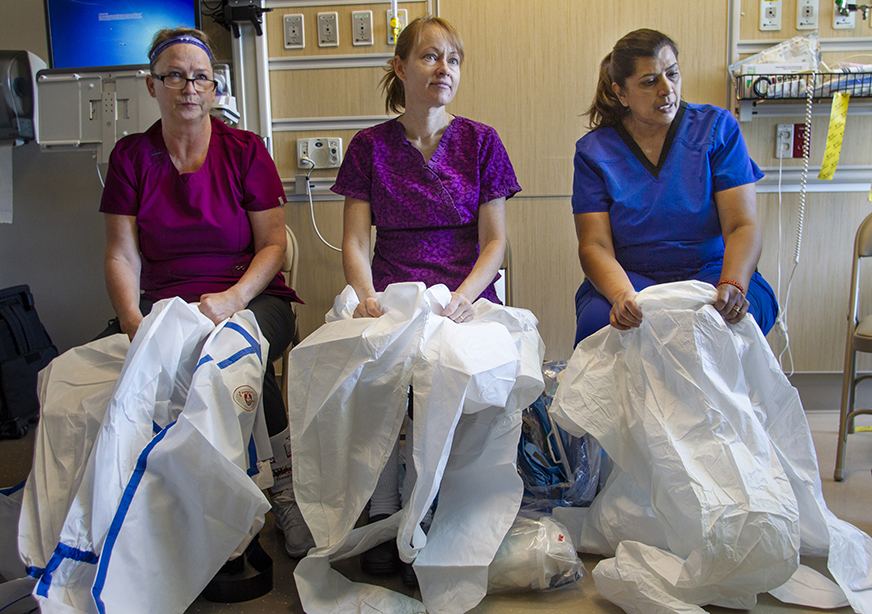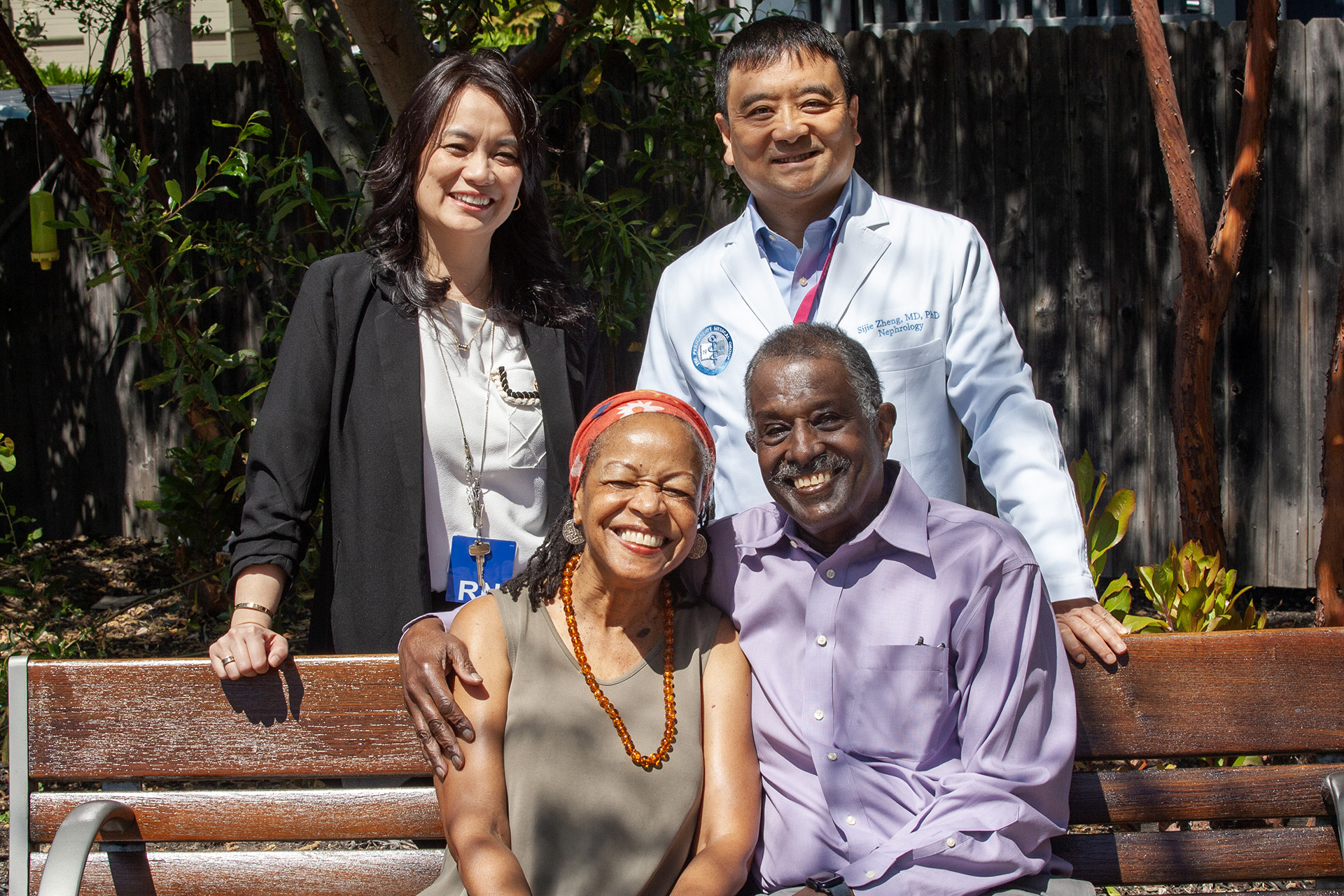With more than 2,100 Ebola deaths recorded in the Democratic Republic of Congo since August of last year, Kaiser Permanente Northern California has emerged as a leader to treat the disease should a patient arrive in the area.
Kaiser Permanente South Sacramento Medical Center nurses Anna Mulessa, left, Katie McConniel, middle, and Pramila Ram, right, begin the laborious process of donning protective gear in preparation for an Ebola virus training in September at Kaiser Permanente Oakland Medical Center.
The training program, led by Dr. Meyer and Suzy Fitzgerald, MD, a Kaiser Permanente Santa Rosa emergency medicine physician, has evolved over the last 5 years into a nationally known hub that provides information and training to front-line health care workers.
In September, the 2 doctors organized an all-day program at Kaiser Permanente Oakland Medical Center attended by nurses, physicians, officials from the California Department of Public Health (CDPH), and the U.S. Public Health Service with training led by the National Ebola Training and Education Center.
“Treating an Ebola patient is complicated, and it’s rare, and it’s not something we do every day,” said Dr. Meyer. “We’re setting a new standard in terms of training for patient care and provider safety, and now we are being regarded as leaders in the field.”
Dr. Fitzgerald said the Ebola virus is an extremely dangerous disease with a 50% death rate, so it is important to train front-line providers to “identify patients who are suspect from their symptoms and travel history, and isolate them without infecting others,” all while making the patient feel as comfortable as possible.
Kaiser Permanente Oakland Medical Center and Kaiser Permanente South Sacramento Medical Center are state-licensed specialty care units for Ebola in Northern California. A third is Mercy Medical Center in Redding.
Even though Kaiser Permanente hospitals have been ready and able to handle an Ebola patient for the last 5 years, the latest outbreak in the Congo, which is the second largest on record in terms of deaths, has added a sense of urgency to making sure the system works efficiently and safely.
“We’ve spent the last year trying to beef up our system for if that patient comes,” said Dr. Meyer.
Part of the recent training included learning how to put on and take off a mountain of protective gear, and how to care for a patient. Nurses and physicians wear 3 pairs of gloves, 3 layers of body coverings, head and neck coverings, leggings, booties, an air purifying respirator, and lots of tape to make sure every square inch of the body is sealed.
The work has garnered praise from top California health officials.
“Kaiser Permanente has been a strong partner in the state’s preparedness efforts for emergencies like Ebola and has always been willing to step up to the challenge,” said Susan Fanelli, acting director of the CDPH.
Being prepared, said Dr. Meyer, involves maintaining an entire system that could be deployed tomorrow, or 2 years from now.
“We have the right equipment to protect health care workers should an Ebola patient arrive, we have a system to communicate with the state, and we know how to transfer patients,” Dr. Meyer said.
Added Dr. Fitzgerald: “We’re ready all the time and we have the ability to scale up our response plans quickly if the need arises.”






This Post Has 0 Comments